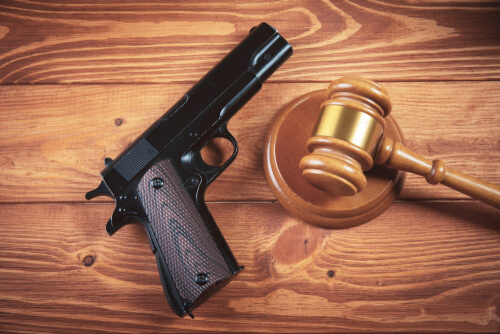The Court continued in relevant part: The right to keep and bear arms is among the “fundamental rights necessary to our system of ordered liberty.” McDonald v. Chicago, 561 2 U.S. 742, 778. That right, however, “is not unlimited,” District of Columbia v. Heller, 554 U. S. 570, 626. The reach of the Second Amendment is not limited only to those arms that were in existence at the Founding. Heller, 554 U. S., at 582. Rather, it “extends, prima facie, to all instruments that constitute bearable arms, even those that were not yet in existence.” Ibid. By that same logic, the Second Amendment permits more than just regulations identical to those existing in 1791. Under our precedent, the appropriate analysis involves considering whether the challenged regulation is consistent with the principles that underpin the Nation’s regulatory tradition. Bruen, 597 U. S., at 26–31.
When firearm regulation is challenged under the Second Amendment, the Government must show that the restriction “is consistent with the Nation’s historical tradition of firearm regulation.” Bruen, 597 U. S., at 24. A court must ascertain whether the new law is “relevantly similar” to laws that our tradition is understood to permit, “applying faithfully the balance struck by the founding generation to modern circumstances.” Id., at 29, and n. 7. Why and how the regulation burdens the right are central to this inquiry. As Bruen explained, a challenged regulation that does not precisely match its historical precursors “still may be analogous enough to pass constitutional muster.” Id., at 30.
Section 922(g)(8) survives Rahimi’s challenge. Rahimi’s facial challenge to Section 922(g)(8) requires him to “establish that no set of circumstances exists under which the Act would be valid.” United States v. Salerno, 481 U. S. 739, 745. Here, Section 922(g)(8) is constitutional as applied to the facts of Rahimi’s own case. Rahimi has been found by a court to pose a credible threat to the physical safety of others, see §922(g)(8)(C)(i), and the Government offers ample evidence that the Second Amendment permits such individuals to be disarmed.
Bruen is cited throughout the 8-1 majority opinion. Ironically, it was Justice Thomas, the lone dissent here, who authored Bruen.

